🚦 Soil Taxonomy
12 soil orders
Modern classification
- It is US comprehensive soil classification system based on 7th approximation.
- This system maintains the natural body concept and two major features adopted were (1975):
- Primary basis for identifying different classes are properties of soils rather than genesis of soil.
- Latin or Greek words are the basis for nomenclature (Soil Taxonomy).
- Six categories were adopted for this system:
- Order
- Sub-order
- Great group
- Sub-group
- Family and
- Series
- The smallest unit of soil classification is the soil
series. - The smallest volume of soil (1 to 10 m2) called as
Pedon. - Many Pedon within defined limit is called soil series that is basic unit of classification.
- A/Q to USDA there are
10 soil orders. - Soil orders in the 7th approximation and their derivation:
12 soil orders. (A VGHAMI HOUSE)
1. Inceptisols
- Inceptisols (from Latin inceptum – beginning) exhibit a moderate degree of soil development, lacking significant clay accumulation in the subsoil.
Young,embryonic soilswith few diagnostic features. These are usually the weakly developed young soil though they are more developed than entisols.- Found in humid region.
- Percentage of total area in India is
39.74%.
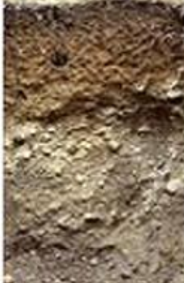
2. Entisols
Recently formed(Alluvial soils), little profile development (underdeveloped)- Percentage of total area in India is
28.08%.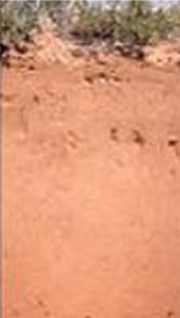
3. Alfisols
- Relatively young soils, acidic soils, larger in
forest soils. - Percentage of total area in India is 13.55

4. Vertisols
- Latin verto – turn.
- Dark or black swelling clays, deep cracks develop when dry. The regur soils of India are example of vertisols.
- Percentage of total area in India is 8.52
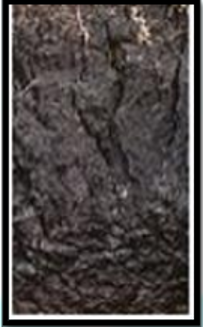
5. Aridosols
- Desert soils of arid regions. Lack in organic matter. Salinisation is the main problem.
- Percentage of total area in India is 4.28
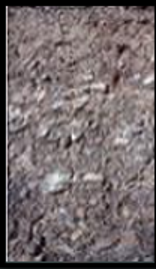
6. Ultisols
- Highly weathered forest soil, which tend to be reddish in colour because of residual iron and aluminium oxidises.
- The increased precipitation in ultisol region mean greater mineral alteration, more leaching, and therefore, a lower level of fertility.
- Percentage of total area in India is 2.51
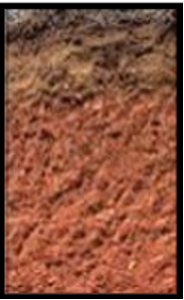
7. Mollisols
- Most productive soils of the earth.
- They are rich in humus content.
- They have dark – coloured surface.
- Mollisols are soft, even when dry, with granular pads, loosely arranged when dry.
- These humus rich organic soils are high in basic cations and have high fertility.
- Soils of the steppes and prairies of the world belong to this group.
- Percentage of total area in India is 0.4.

8. Oxisols
- Oxide, sesquioxide rich soils, highly weathered soils of tropical regions.
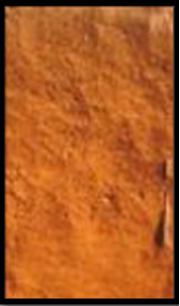
9. Histosols
- Called organic soil, have
more than 20 % O.M. - Greek: Histo means tissue.
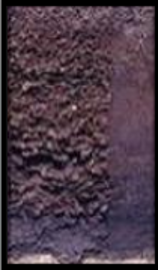
10. Spodosols
- Such soils are with sub soil accumulation of sesquioxide and humus.
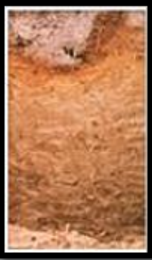
11. Endisols
- Formed in
volcanic ash. Having high proportion of glass and amorphous colloidal materials.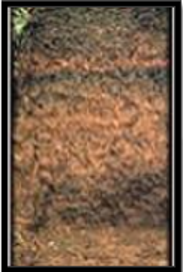
12. Gelisols
- Gelisols (from Latin gelare – to freeze) are soils that are permanently frozen.
- Found in the Artic and Antarctic, as well as at extremely high elevations.
- Churning soils. Found in
cold climate. Known as crysols. - They are not found in India.

Cat Clays

- Wet clay soils high in reduced forms of Sulfur that upon being drained become extremely acid due to oxidation of ‘S’ compounds and formation of sulphuric acid.
- Cat clay is clay-sulphate which shines like cat’s eye.
Catena
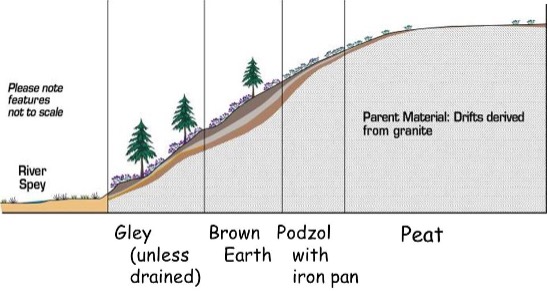
- A
sequence of soilsof about the same age, derived from similar parent material, and occurring under similar climatic conditions, but having different characteristics due to variation in relief and in drainage.
Caliche

- A Layer near the surface, more or less cemented by
secondary carbonates of Ca and Mg precipitatedfrom the soil solution.
Modern classification
- It is US comprehensive soil classification system based on 7th approximation.
- This system maintains the natural body concept and two major features adopted were (1975):
- Primary basis for identifying different classes are properties of soils rather than genesis of soil.
- Latin or Greek words are the basis for nomenclature (Soil Taxonomy).
- Six categories were adopted for this system:
- Order
- Sub-order
- Great group
- Sub-group
- Family and
- Series
- The smallest unit of soil classification is the soil
series. - The smallest volume of soil (1 to 10 m2) called as
Pedon. - Many Pedon within defined limit is called soil series that is basic unit of classification.
- A/Q to USDA there are
10 soil orders. - Soil orders in the 7th approximation and their derivation:
12 soil orders. (A …
Become Successful With AgriDots
Learn the essential skills for getting a seat in the Exam with
🦄 You are a pro member!
Only use this page if purchasing a gift or enterprise account
Plan
Rs
- Unlimited access to PRO courses
- Quizzes with hand-picked meme prizes
- Invite to private Discord chat
- Free Sticker emailed
Lifetime
Rs
1,499
once
- All PRO-tier benefits
- Single payment, lifetime access
- 4,200 bonus xp points
- Next Level
T-shirt shipped worldwide

Yo! You just found a 20% discount using 👉 EASTEREGG

High-quality fitted cotton shirt produced by Next Level Apparel